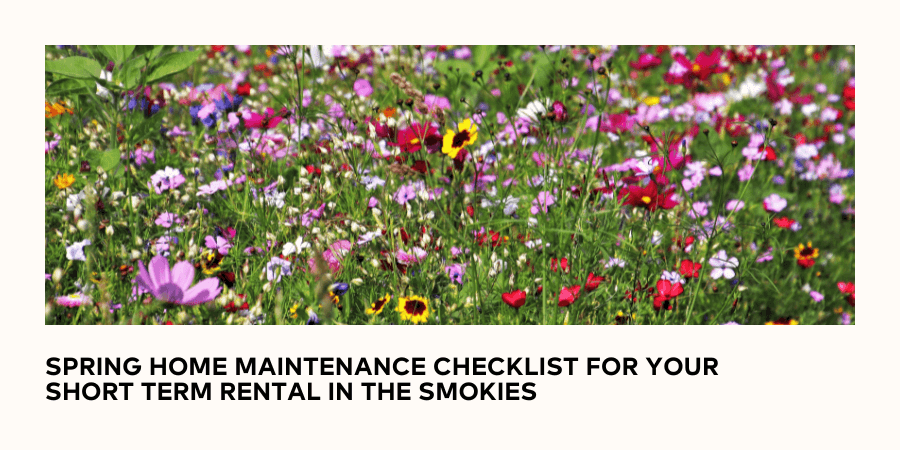The national housing market is showing signs of warming up. There is more inventory, prices are softening in some areas, and mortgage rates have been holding steady in the mid-6% range.
July brought a 16% year-over-year increase in the number of homes for sale, the highest inventory levels we’ve seen since the 2020 lockdowns, according to the National Association of REALTORS® (NAR).
But while these national numbers set the stage, the truth is there’s no single “national housing market.”
That’s especially true here in the Smoky Mountains, due to our unique blend of tourism-driven demand and short term rental opportunities.
The National Picture Shows Signs of a Thaw
- Inventory is rising. With 1.55 million homes on the market, buyers now have the most options in nearly five years.
- Prices are cooling slightly. In July, 33 of the 50 largest metro areas saw prices drop, and price growth nationally is slowing to its lowest pace in two years. Still, the national median price remains high at $422,400.
- Mortgage rates are stable but elevated. Thirty-year fixed mortgages are averaging around 6.6%. While not low, this is the most stable we’ve seen in months and it’s even prompted a wave of refinancing among homeowners who had rates above 7%.
- The “lock-in effect” is easing. During the pandemic, many homeowners refinanced at historically low 3% rates, discouraging them from selling. Now, rising inventory shows more people are making moves, even if it means taking on a higher loan.
What Does It Mean for Buyers?
For the first time in years, buyers are regaining negotiating power. NAR Chief Economist Lawrence Yun notes that today’s buyers are in the best position in more than five years to shop for the right home and negotiate a better deal.
With inventory rising, buyers now have more choices, which means there’s less pressure to overbid and more time to make thoughtful decisions.
Builder concessions are also making a comeback, with many offering price reductions averaging around 5%, as well as mortgage rate buydowns and closing cost credits.
That said, competition hasn’t disappeared, 21% of homes in July still sold above asking price, with the average listing receiving just over two offers.
Cash buyers also remain a powerful force in the market, making up roughly 31% of all transactions, which means financed buyers should be ready to compete strategically.
What Does It Mean for Sellers?
Buyers are enjoying more leverage, but sellers still have reasons to stay positive!
Homes are taking longer to sell with the average property nationally now spending 28 days on the market compared to 24 days a year ago.
Price reductions are becoming more common as rising inventory gives buyers more options and leaves overpriced listings struggling to attract offers.
Even so, equity remains significant, the average U.S. homeowner has gained about $140,900 in wealth since 2019, a clear reminder that long-term ownership continues to build value.
In today’s market, preparation is key: move-in ready homes still command top dollar, while those needing work are more likely to sit.
Regional and Local Insights
National numbers tell one story, but here’s how sales broke down by region in July:
- Northeast: Sales up 8.7%, median price $509,300 (+0.8%).
- Midwest: Sales flat to slightly higher, median price $333,800 (+3.9%).
- South: Sales up 2.2%, but prices dipped 0.6% to $367,400.
- West: Sales rose 1.4% in July, but are down 4% year-over-year; prices down 1.4% to $620,700.
Location is still king on the Smoky Mountain market. Cabins located within a 15–20 minute drive of major attractions like Dollywood, the Parkway in Pigeon Forge, or the National Park consistently enjoy higher occupancy rates and command better nightly rates.
Privacy and views are always in demand. Guests today are seeking both convenience and seclusion. Properties offering mountain vistas, wooded privacy, or unique outdoor spaces are attracting more interest.
Seasonality drives trends in occupancy. Fall foliage, summer vacations, and the holiday season remain the most impactful periods for short-term rental performance in the Smokies. That’s why investors should always base projections on annual averages, not just high income months.
Investor Takeaways for the Smokies
If you’re considering a short-term rental or second home in Sevier County, there are a few key takeaways to keep in mind.
Rising national inventory could creating more opportunities for buyers to secure a well-positioned property.
When running your numbers, be conservative, don’t rely on peak-season income alone, but instead use annual occupancy averages to keep projections realistic.
Investors should also factor in the cost of taxes and permits, since Sevier County has adjusted property tax classifications for STRs and implemented a new permitting program.
Finally, remember that location matters most, but amenities like hot tubs, game rooms, and theater spaces can help a property stand out!
So, secure the best location your budget allows and then enhance it with thoughtful amenities.
The 2025 housing market is showing signs of warming, but it’s not the same everywhere. For Smoky Mountain buyers and investors, that means opportunity, but also the need for strategy.
Rising inventory and softening prices nationally may open new doors, while here in the Smokies, location and smart amenities remain the keys to long-term success.
Thinking about investing in a Smoky Mountain STR or second home? The Jason White Team has been guiding buyers and sellers through these mountains since 1996. Let’s connect and talk about how today’s shifting market can work in your favor.










